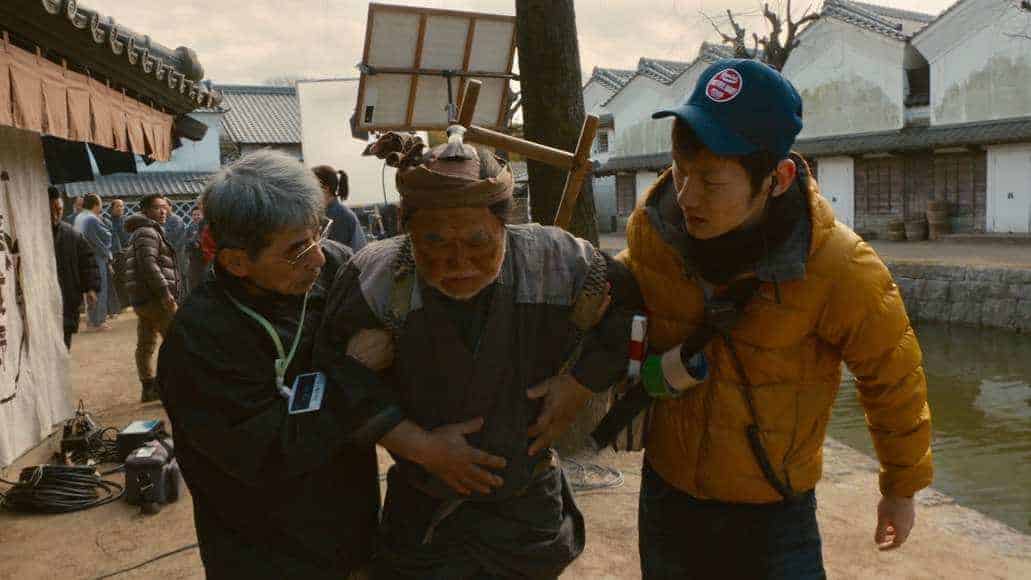In the world of enka singer Hiroshi (Sho Aoyagi) most of his life revolves around the various performances he has to give in front of crowds largely consisting of middle-aged women. Bored and visibly appalled by these events, he tries to leave them as soon as possible, but this time Masako (Mariko Tsutsui) stops him on his way out of the last venue he sang in. Eventually Hiroshi finds he has been drugged by Masako and drops unconscious, only to find himself back at her apartment when he wakes up.
Interwoven with Hiroshi's story are the stories of Tetsuo (Nobuyuki Suzuki) and Takeru (Keita Machida). The first is an ex-con who returns to his home town, after having spent many years in jail, to take revenge on those on some men who betrayed him, which eventually led to his arrest. Takeru's girlfriend is in a coma and as he is desperate to help her, he prays at a shrine where he is told by a mysterious voice to do three good deeds and then she will open her eyes.
“Jam” is screening at New York Asian Film Festival

As Hiroshi stumbles through the streets, realizing he was perhaps drugged by someone, all three of them run into each other by chance. An encounter which, along with their various motivations and fates, will have crucial consequences on their lives and those of others.
In many ways “Jam” defines a throwback to the themes and narrative structure of SABU's earlier work, especially features such as “Unlucky Monkey” and “Dangan Runner”. Similar to these movies, SABU's script deals with the themes of fate and coincidence as well as the idea of lives being interconnected within this world. Even though the three central characters have no connection with each other, the course of their lives brings them together, or rather sets them on a collision course with the kind of life they have decided to lead.

When one of the gangsters who have betrayed Tetsuo talks about the importance of “doing good deeds” which will have positive consequences on one's life, this reflects more than a rather simplified deterministic philosophy. Even though the execution of these themes may be a bit superficial at some point, there is always the question of agency, whether these characters could have prevented what happens to them during the course of these few hours “Jam” portrays. The image of Hiroshi tied to a chair, forced to compose another one of his kitschy ballads for an obsessive fan is also the image of a man who has forced himself into this position.
Essentially being in front of a crowd, being on a path of revenge or being on the path of “doing good deeds” results in the idea of being tied down by one's choices, leading to the aforementioned question of agency. Considering “Jam”, as well as “Dangan Runner” or “Unlucky Monkey” in this context highlights the importance of your own choices and the kind of domino effect you set in motion when you choose one path over the other.

In terms of performances, SABU's three male leads add the right mixture of black irony and content to the characters they play. All of them are rather content with being led by a force or their environment, rather than being the person actively taking part to change something for the better. While Suzuki's character “communicates” exclusively with his fists and a hammer, resulting in many fast-paced, rather brutal scenes and brawls, Hiroshi and Tekuru have become content with being led by a force higher than themselves, in their case spiritualism and popularity. The dynamic use of camera and editing enforces the idea of them becoming more active in their choices, even though the consequences of their past choices still haunt them.
In the end, SABU's “Jam” offers many aspects which fans of the director already know. The film is a solid blend of drama and thriller competently made, especially in the various chase sequences, with a great cast. In the context of SABU's work, however, it feels as if his there is a certain degree of stagnation which may still be entertaining to watch, but has very little new to add to the certain themes.















